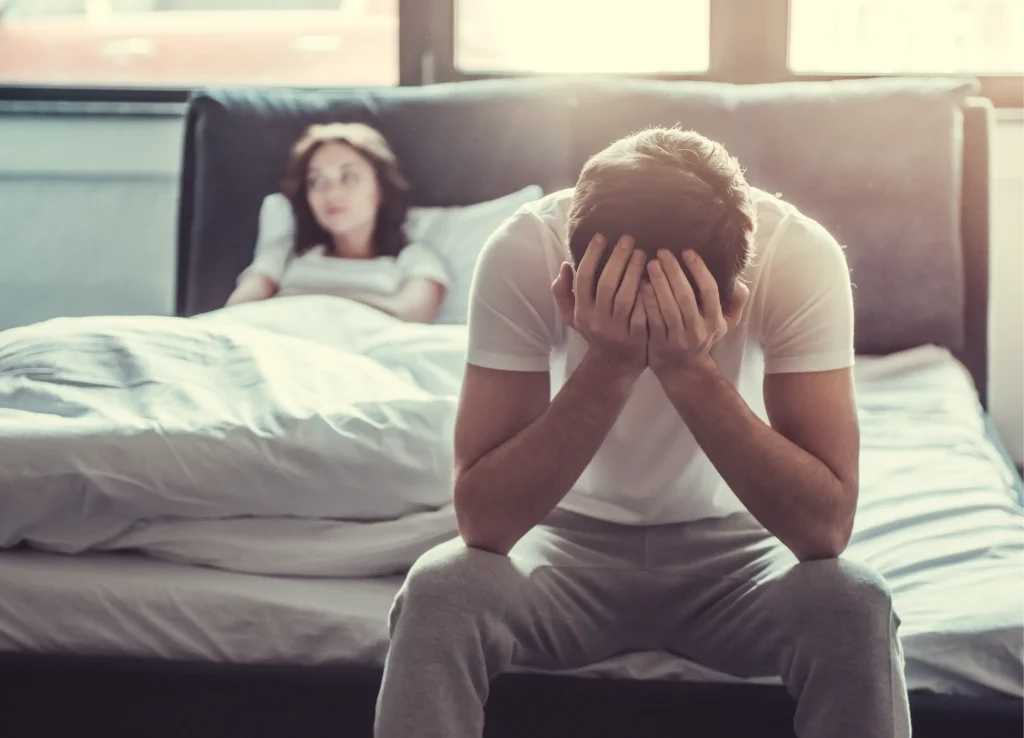Now Accepting New Patients. Contact Us Today To Schedule Your Visit.

The exact cause of PE is unknown, but various factors may contribute, including biological, chemical, or emotional reasons. Some potential causes are:
Low serotonin levels, which can shorten the time to ejaculation and lead to PE.
Emotional issues like stress and relationship problems may be associated with PE.
Aging, while not a direct cause, can bring about changes in erections and ejaculation.
Psychological therapy, behavioral therapy (sex exercises), and medications are primary treatments for PE. Collaborating with your doctor will help determine the most suitable approach, often involving a combination of treatments.
Psychological therapy aims to address feelings that may contribute to sexual relationship problems. The goal is to identify the source of issues and find solutions to alleviate PE. This therapy may be used alone or in conjunction with medical or behavioral therapy.
Behavioral therapy employs exercises to enhance tolerance and delay ejaculation, helping train the body away from PE. Methods include the squeeze method and the stop-start method:
The squeeze method involves stimulating the penis until close to ejaculation, then squeezing the penis firmly to reduce the erection. The goal is to understand the sensations leading to climax.
The Stop-Start Method entails stimulating the penis until just before ejaculation, stopping stimulation just before climax, and then resuming stimulation. This process is repeated, with the goal of ejaculating on the fourth attempt. Regular practice builds control.
Medical therapy: While no drugs are specifically approved for PE in the U.S., certain medications, numbing creams, and sprays can help delay ejaculation. Antidepressants with delayed orgasm as a side effect are sometimes used “off-label” for PE. Numbing creams or sprays can be applied to the penis head before sex, reducing sensation. These should be washed off before sex, and condoms can prevent numbness in the vagina while offering protection against disease and pregnancy.
Using these techniques, approximately 95 out of 100 men may experience recovery from PE. While no guarantees can be made, learning to relax may aid in the process. If the issue persists, continued collaboration with your doctor is essential to finding effective solutions.
Delayed orgasm (DO) and anorgasmia (AO) represent challenges in achieving sexual climax, often causing distress. DO involves a delay in or absence of orgasm, separate from ejaculation. Men with AO do not experience orgasm at all. These conditions can lead to personal frustration, impacting relationships and causing anxiety. It’s vital to distinguish between ejaculation and orgasm, as they are distinct processes.
According to the World Health Organization, DO is the difficulty in achieving orgasm after ample sexual stimulation, causing personal distress. Anorgasmia, defined by the International Consultation on Sexual Medicine, is the perceived absence of orgasm, irrespective of ejaculation. The Diagnostic and Statistical Manual of Mental Disorders (DSM-5) further outlines criteria for DO, considering its duration and impact on the individual.
Orgasm is a complex process involving physical sensations and arousal. The brain processes pressure build-up in the posterior urethra during ejaculation, triggering the orgasm. Functional neuroimaging reveals increased brain activity during orgasm, with specific areas activated.
Approximately 25% of men routinely achieve orgasm in all sexual encounters, as per DSM-5. Prevalence increases with age, peaking in men in their 80s. Primary DO is rare, affecting 1.5 in 1000, while secondary DO is seen in 3-4% of men under 65.
Primary anorgasmia begins in a man’s first sexual experiences, while secondary anorgasmia follows a period of normal sexual function. Genetic factors play a minimal role, but familial effects contribute. Conditions like hypothyroidism, testosterone deficiency, and SSRI use may cause DO.
A comprehensive medical and psychosexual history is essential. Factors like medication use, penile sensitivity, endocrine disorders, and psychosocial stressors are considered. Identifying the onset, consistency, and situational aspects of the problem helps determine appropriate treatment.
Delayed orgasm and anorgasmia significantly impact sexual satisfaction. Identifying potential causes, including medication side effects, penile sensitivity loss, endocrine issues, and psychological factors, guides treatment. While no perfect pharmacotherapies exist, a holistic approach involving lifestyle changes, psychotherapy, and targeted interventions can improve outcomes. If you experience these issues, consult with a healthcare professional to explore personalized solutions for your situation.